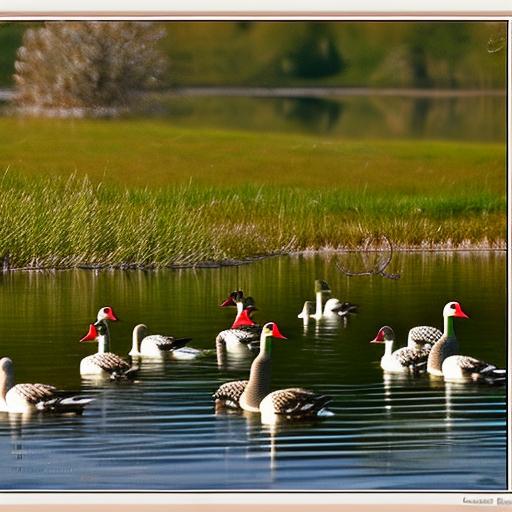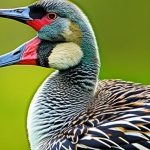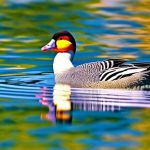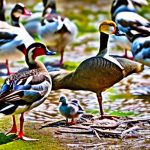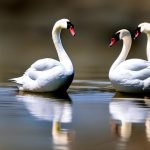Having a lake near your home or office can be a beautiful and serene experience. The calming sound of water, the picturesque views, and the opportunity for recreational activities make lakes a desirable feature in any environment. However, one downside of having a lake nearby is the presence of geese. While geese can be charming creatures to observe from a distance, they can also cause problems when they congregate near the lake. Their droppings can create unsightly messes and pose health risks. In this article, we will explore various methods to manage geese populations near lakes, ensuring a clean and enjoyable environment for everyone.
Key Takeaways
- Geese are attracted to water bodies and may cause damage to the surrounding area.
- Physical barriers, such as fences or netting, can be effective in deterring geese from entering the lake.
- Sound and light deterrents, such as loud noises or flashing lights, can also be used to keep geese away.
- Creating a natural buffer zone with tall grasses or shrubs can discourage geese from approaching the lake.
- Installing decoys or scarecrows can intimidate geese and prevent them from landing on the lake.
Understanding the behavior of geese near water bodies
Geese are naturally attracted to water bodies for several reasons. Firstly, water provides them with a source of food. They feed on aquatic plants, grasses, and insects found in and around lakes. Additionally, water offers protection from predators, as geese can quickly take flight or swim away if they feel threatened. Geese are also social animals and tend to gather in large groups, known as flocks, near water bodies.
When geese are near lakes, their behavior can be both fascinating and frustrating. They are known to be territorial creatures and will defend their nesting sites aggressively. This can lead to confrontations with humans or other animals that come too close to their nesting areas. Geese are also notorious for leaving behind large amounts of droppings, which not only create an unsightly mess but can also pose health risks due to the bacteria they carry.
Implementing physical barriers to deter geese from entering the lake
One effective method to manage geese populations near lakes is by implementing physical barriers that prevent them from entering the area. There are several types of physical barriers that can be used, such as fences, netting, or floating barriers. Fences can be installed around the perimeter of the lake to create a physical barrier that geese cannot easily cross. Netting can be placed over the water surface to prevent geese from landing on the lake. Floating barriers, such as buoys or floating ropes, can also be used to create a visual deterrent for geese.
The effectiveness of physical barriers depends on their design and maintenance. Fences should be tall enough to prevent geese from flying over them and should be regularly inspected for any gaps or damage. Netting should be securely fastened and regularly checked for tears or holes. Floating barriers should be strategically placed to create an effective deterrent for geese. It is important to note that physical barriers may not completely eliminate geese from the area, but they can significantly reduce their presence near the lake.
Using sound and light deterrents to keep geese away from the lake
Another method to manage geese populations near lakes is by using sound and light deterrents. Geese are sensitive to loud noises and bright lights, which can make them uncomfortable and discourage them from staying in the area. There are various types of sound and light deterrents available, such as propane cannons, motion-activated lights, or ultrasonic devices.
Propane cannons produce loud noises at regular intervals, mimicking the sound of a predator or danger approaching. Motion-activated lights can startle geese when they detect movement, making them feel unsafe and prompting them to leave the area. Ultrasonic devices emit high-frequency sounds that are unpleasant to geese but inaudible to humans.
The effectiveness of sound and light deterrents depends on their proper placement and usage. Propane cannons should be positioned strategically around the lake to cover a wide area and should be set to go off at random intervals to prevent geese from becoming accustomed to the noise pattern. Motion-activated lights should be installed in areas where geese tend to congregate, such as near nesting sites or feeding areas. Ultrasonic devices should be placed in areas where geese are known to gather, but it is important to note that their effectiveness may vary depending on the specific device and the behavior of the geese.
Creating a natural buffer zone around the lake to discourage geese from approaching
Creating a natural buffer zone around the lake can be an effective long-term solution to manage geese populations. A natural buffer zone consists of planting native vegetation, such as tall grasses or shrubs, around the perimeter of the lake. This creates a physical barrier that makes it difficult for geese to access the water and also provides them with less desirable habitat.
There are several benefits to creating a natural buffer zone. Firstly, it provides a visual deterrent for geese, as they prefer open spaces where they can easily spot potential predators. Tall grasses and shrubs make it harder for geese to see their surroundings, making them feel less secure and less likely to approach the lake. Secondly, native vegetation can provide alternative food sources for geese, reducing their reliance on the lake for sustenance. Lastly, a natural buffer zone can enhance the overall biodiversity of the area by attracting other wildlife species that benefit from the native vegetation.
To create a natural buffer zone, it is important to choose native plant species that are well-suited to the local climate and soil conditions. These plants should be strategically planted around the lake, leaving enough space for recreational activities and maintaining clear sightlines for safety purposes. Regular maintenance, such as pruning or removing invasive species, is also necessary to ensure the effectiveness of the buffer zone.
Installing decoys or scarecrows to intimidate geese and prevent them from landing on the lake
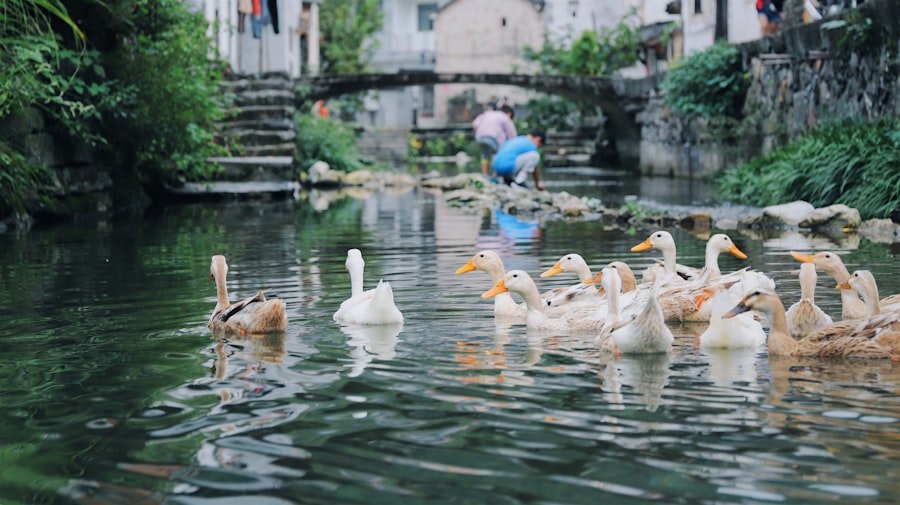
Installing decoys or scarecrows can be an effective method to intimidate geese and prevent them from landing on the lake. Geese are social animals and tend to avoid areas where they perceive potential threats or predators. By placing decoys or scarecrows near the lake, it creates the illusion of a predator presence, making geese feel unsafe and prompting them to find an alternative location.
Decoys can be in the form of plastic replicas of predators, such as coyotes or owls, that are strategically placed around the lake. Scarecrows can be constructed using materials such as old clothes stuffed with straw or other materials to resemble a human figure. Both decoys and scarecrows should be regularly moved or repositioned to prevent geese from becoming accustomed to their presence.
The effectiveness of decoys and scarecrows may vary depending on the behavior of the geese and the specific design of the deterrents. Some geese may become habituated to the presence of decoys or scarecrows over time, especially if they do not perceive any actual threat. Therefore, it is important to regularly monitor and adjust the placement of these deterrents to maintain their effectiveness.
Removing potential food sources near the lake to discourage geese from congregating in the area
One effective way to discourage geese from congregating near lakes is by removing potential food sources. Geese are attracted to areas where they can find abundant food, such as grassy areas or open spaces where they can easily graze. By eliminating or reducing these food sources, it makes the area less desirable for geese and encourages them to seek alternative locations.
There are several types of food sources that attract geese, including grass clippings, spilled birdseed, or intentionally feeding them. Grass clippings left on lawns after mowing can provide an easy food source for geese. Spilled birdseed from bird feeders can also attract geese, as they will readily consume any available food. Lastly, intentionally feeding geese can create a dependency on human-provided food and encourage them to stay in the area.
To remove potential food sources, it is important to properly dispose of grass clippings after mowing and regularly clean up any spilled birdseed. Additionally, educating the public about the negative effects of feeding geese and implementing regulations or guidelines against feeding can help discourage this behavior.
Using non-toxic repellents to discourage geese from entering the lake
Non-toxic repellents can be an effective method to discourage geese from entering the lake. These repellents work by creating an unpleasant taste or smell that geese find unappealing, making them less likely to stay in the area. There are various types of non-toxic repellents available, such as grape extract, methyl anthranilate, or garlic-based products.
Grape extract is a natural substance that can be sprayed on grassy areas or vegetation near the lake. Geese find the taste and smell of grape extract unpleasant and will avoid areas treated with it. Methyl anthranilate is a synthetic compound that mimics the taste and smell of grapes and can be applied in a similar manner. Garlic-based products can also be effective, as geese find the strong odor of garlic unappealing.
The effectiveness of non-toxic repellents may vary depending on the specific product used and the behavior of the geese. It is important to follow the instructions provided by the manufacturer when applying these repellents and to reapply them regularly, especially after rainfall or heavy irrigation.
Educating the public about the importance of not feeding geese near the lake
Educating the public about the importance of not feeding geese near the lake is crucial in managing geese populations. Feeding geese can create a dependency on human-provided food and encourage them to stay in the area. It also leads to an overpopulation of geese, as they reproduce at a faster rate when food is readily available.
There are several negative effects of feeding geese. Firstly, it can lead to an increase in aggressive behavior, as geese become more territorial and protective of their food source. This can pose a safety risk to humans or other animals that come too close to the geese. Secondly, feeding geese can contribute to water pollution, as their droppings contain high levels of nitrogen and phosphorus, which can lead to algal blooms and oxygen depletion in the lake. Lastly, an overpopulation of geese can result in habitat degradation, as their grazing habits can damage vegetation and disrupt the natural balance of the ecosystem.
To educate the public about not feeding geese, it is important to provide clear signage near the lake that explains the negative effects of feeding and encourages responsible behavior. Additionally, community outreach programs or educational campaigns can be organized to raise awareness about the importance of maintaining a healthy and balanced ecosystem.
Implementing a regular maintenance plan to keep the area around the lake clean and free of debris
Implementing a regular maintenance plan is essential to keep the area around the lake clean and free of debris. Regular maintenance helps prevent the accumulation of food sources or nesting materials that attract geese and encourages them to stay in the area. It also ensures that physical barriers, sound and light deterrents, or other management methods are properly maintained and functioning effectively.
A regular maintenance plan should include tasks such as removing fallen branches or debris from the lake, regularly mowing grassy areas to prevent overgrowth, and cleaning up any spilled food or garbage. It is important to establish a schedule for these tasks and assign responsibility to individuals or teams who will be responsible for their completion.
Regular monitoring of the lake and its surrounding areas is also necessary to identify any potential issues or changes in geese behavior. This allows for timely adjustments or modifications to management strategies if needed.
Seeking professional help from wildlife experts to manage geese populations near the lake
In some cases, seeking professional help from wildlife experts may be necessary to effectively manage geese populations near the lake. Wildlife experts have the knowledge and experience to assess the specific situation and recommend appropriate management strategies. They can also provide guidance on legal and ethical considerations when dealing with geese populations.
To find and hire wildlife experts, it is advisable to contact local wildlife agencies or organizations that specialize in wildlife management. These professionals can conduct site visits, assess the geese population, and provide recommendations tailored to the specific needs of the area. It is important to choose reputable and experienced experts who have a track record of successfully managing geese populations.
Managing geese populations near lakes requires a multi-faceted approach that combines various methods and strategies. Physical barriers, sound and light deterrents, natural buffer zones, decoys or scarecrows, removal of potential food sources, non-toxic repellents, public education, regular maintenance, and seeking professional help are all effective tools in managing geese populations. By implementing these methods, individuals and communities can create a clean and enjoyable environment around lakes while ensuring the well-being of both humans and geese. It is important for everyone to take action and be proactive in managing geese populations near their own lakes to maintain a harmonious coexistence with nature.
If you’re looking for effective ways to keep geese away from your lake, you might also be interested in learning about the importance of a well-designed chicken coop. Poultry Wizard offers a helpful article on “Chicken Coop Interior Ideas” that provides valuable insights on creating a safe and comfortable environment for your chickens. By implementing some of these ideas, you can not only protect your feathered friends but also deter unwanted geese from invading their space. Check out the article here for more information.
FAQs
What are some common problems caused by geese near lakes?
Geese can cause a number of problems near lakes, including water pollution, damage to vegetation, and aggressive behavior towards humans.
What are some effective ways to keep geese away from lakes?
Some effective ways to keep geese away from lakes include using decoys, installing fencing or netting, using noise deterrents, and removing food sources.
Are there any natural methods for keeping geese away from lakes?
Yes, there are natural methods for keeping geese away from lakes, such as planting tall grasses or using natural predators like dogs or hawks.
Is it legal to harm or kill geese near lakes?
In most cases, it is illegal to harm or kill geese near lakes. It is important to check with local authorities and follow proper procedures for dealing with geese.
What should I do if I encounter an aggressive goose near a lake?
If you encounter an aggressive goose near a lake, it is important to stay calm and slowly back away. Do not approach or try to feed the goose, as this can escalate the situation. If necessary, seek help from a professional wildlife control service.
Meet Walter, the feathered-friend fanatic of Florida! Nestled in the sunshine state, Walter struts through life with his feathered companions, clucking his way to happiness. With a coop that’s fancier than a five-star hotel, he’s the Don Juan of the chicken world. When he’s not teaching his hens to do the cha-cha, you’ll find him in a heated debate with his prized rooster, Sir Clucks-a-Lot. Walter’s poultry passion is no yolk; he’s the sunny-side-up guy you never knew you needed in your flock of friends!

